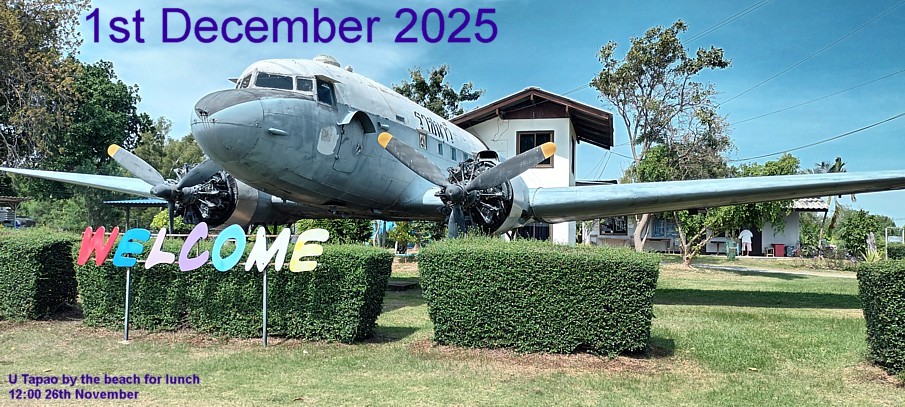

It's becoming cold in Chiang Mai and the farmers are already burning their
fields even though it is against the law.
This means tourism in the north of
Thailand will suffer, and so will the local people with the hospitals dealing
with respiratory problems.
I love Chiang Mai, but even I, or perhaps
especially me, can not stand the smoke for long.
If I gain another sixty days
when I return from Hong Kong am hoping to be able to stay here into February
when the smoke gets bad, but each year the burning starts earlier and earlier,
and the smoke lasts for too many months.
The immigration rules here are being
tightened, and the laws are changed quickly sometimes.
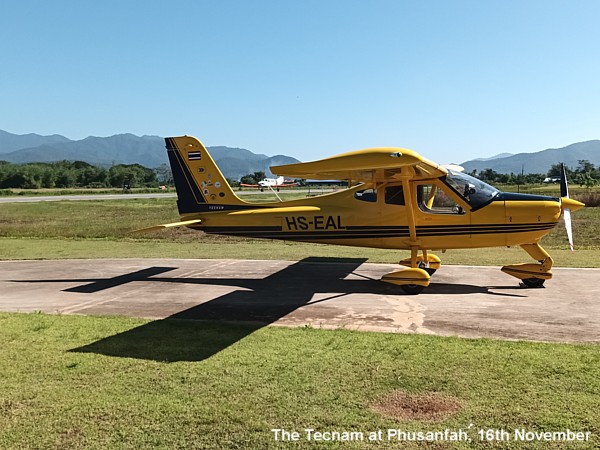
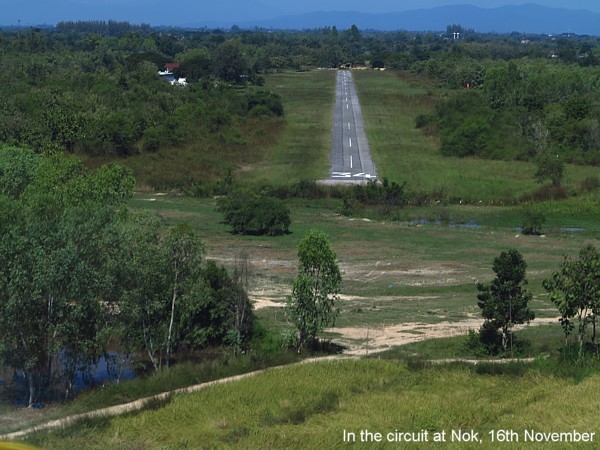
I've done a fair amount of flying these past two and a bit weeks since the last
time I updated this web page.
In Chiang Mai I have visited friends here and
there, and been busy helping out and socialising at the airfield.
Ed is off
on his Dugong survey again today (1st December). In preparation for this we did
some steep turns, stalls, climbing turn stalls, and 'the impossible turn' (how
much height do you lose turning through 180 degrees following an engine failure
after takeoff). We flew up to Phusanfah and back to Nok.
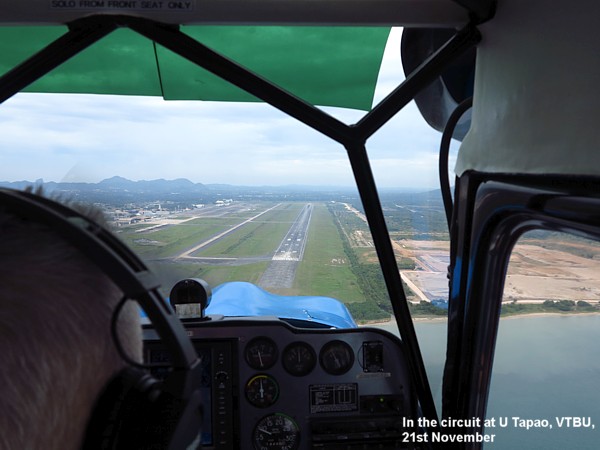
Gerry wanted to get his hand back in before flying his RV8 and so we took Thai
Lion Air to U-Tapao and then returned there two days in a row to do circuits in
the Citabria.
The runway was built for B52 bombers; lot's of room for
tailwheel flying.
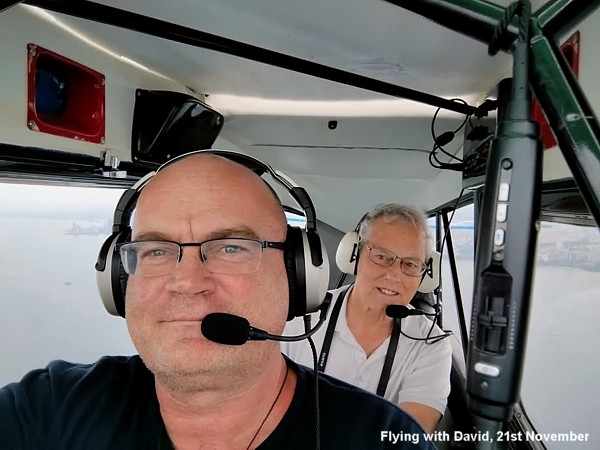
I know David from Canada, he has a Cessna 175 there, he flies Bizjets now, but is a fan of Thailand, and so came for a flight in the Citabria.
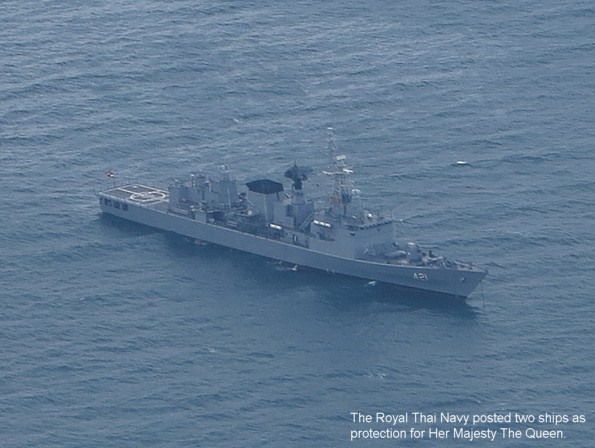
There were airspace
restrictions in favour of the Queen's visit to Pattaya.
In Thailand VVIP
flights cause closure of the airspace and so we have to wait sometimes.
In
Thailand it is very important to be accepting of local regulations, we are
guests in this country.
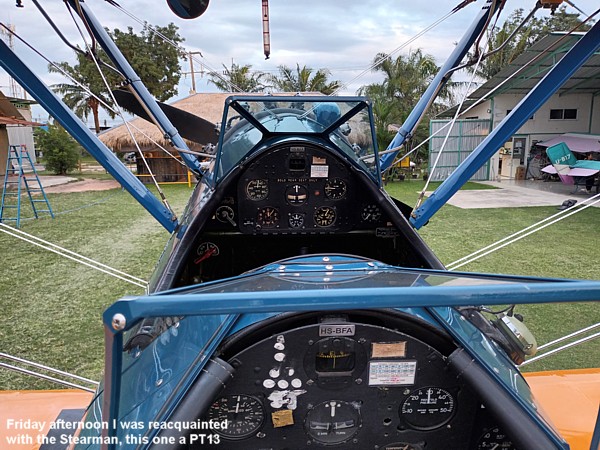
Friday afternoon (21st November) I flew in the front seat with George to get
reacquainted with the Stearman. My lefthand barrel roll was fine, but to the
right it was ugly! There's a challenge for some future date.
My landing was
perfection, and so we swapped seats and I did two stop and go landings whilst
sitting in the back seat.
The Stearman is not a difficult aeroplane, just
remember to three point it.

After flying with Gerry on Saturday I went to Altlantic airfield and swapped a
landing and a flying wire and managed to set the Tiger Moth wings up. It will
need to be properly jacked up and levelled to do the rigging properly.
I
awaited a digital clinometer.
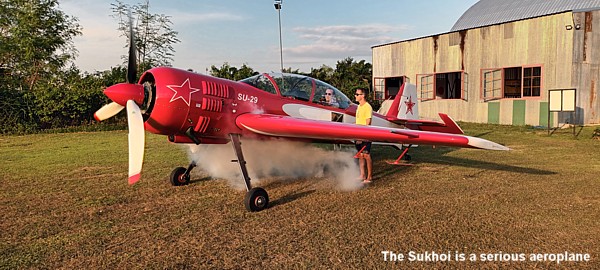
There are some unexpected aeroplanes at Pattaya Eastern... You need nerve and talent to be able to land them on the 350 metre usable, 500 metres overall, runway length with serious obstacles at both ends.

Carl is over from
England and came for a local flight.
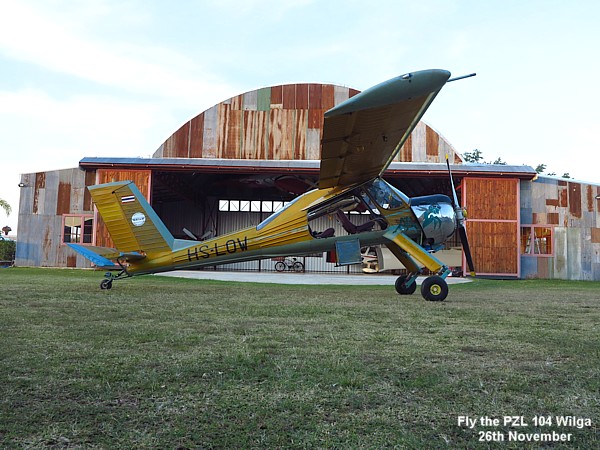
Three friends, two from England and one from Canada, were welcome. I enjoyed introducing them to flying in Thailand.
With Trevor riding in the back I started my check out in the Wilga with Daniel;
his older brother George will have to approve me to fly it in the future...
I
pointed out the approach speed I would use to Daniel and got the nod, (km/hour),
but this was too slow as there was no float/hold-off whatsoever before the
aeroplane plonked in the three point attitude. It wasn't a hard landing just
that you knew it had happened. No bounce.
I once had a similar firm alighting
in the Wilga seaplane in Canada, on glassy water. Again not hard, but a warning
if too slow, and should one flare too high.
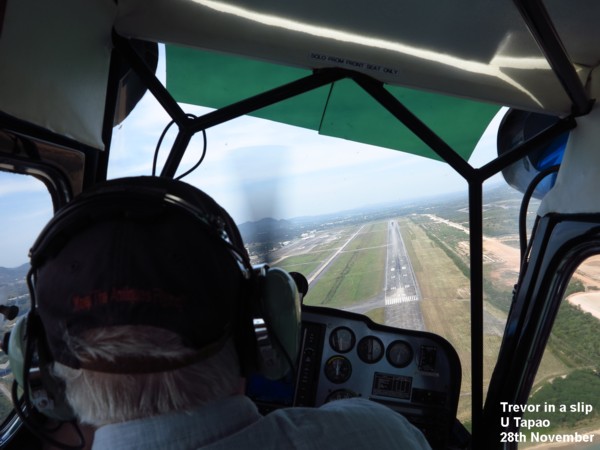
Trevor has a share in a
Luscombe at White Waltham, and he likes to collect aeroplane types.
Of course
he had to demonstrate his abilities to me so we went to U Tapao to do some
circuits.
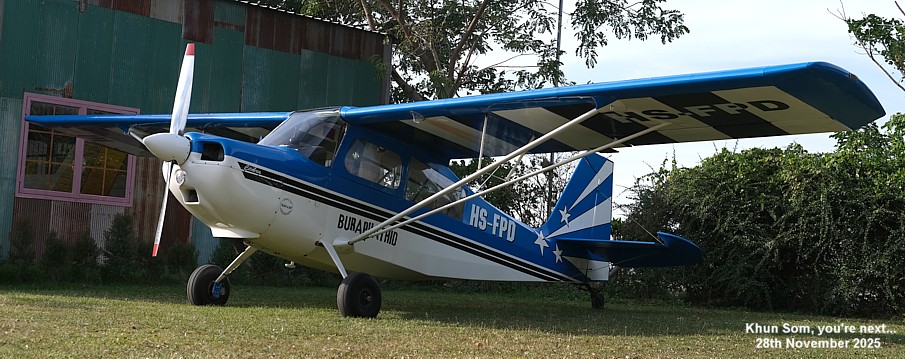
Khun Som is the boss even
if she doesn't own the club.
She chose me to go up with to do some recurrency
flying.

Bobby built a BushCat and Trevor wanted to collect this type and so Bobby very kindly let me take him up in his prized aeroplane.
Then it was time for me to take Trevor up in the Stearman.
I feel at home in
this aeroplane, I flew in G AROY in two movies, and I have flown a 220hp
Stearman in the past as well.
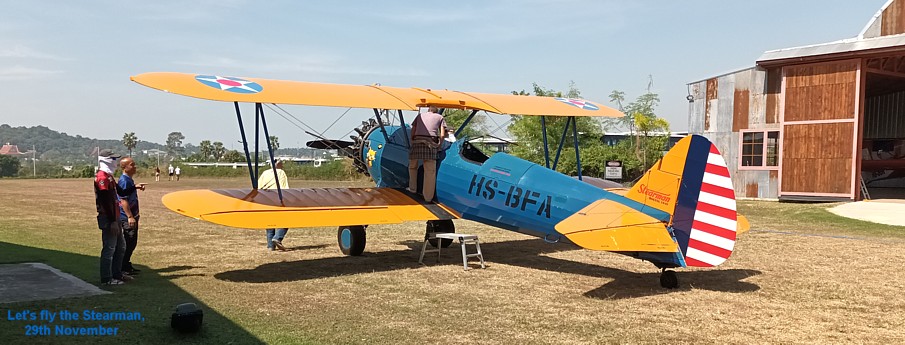
We had a pleasant twenty
minutes in the Stearman, she's expensive to fly.
Now I am back in Chiang Mai for a few days before I go back to Pattaya for the weekend. 'Then it's off to Hong Kong for six days... No flying there.
It's been good these past months, flying in British Columbia and here in
Thailand.
I had great hopes for flying in England, but this has not worked
out as well as I had hoped.

Last time I flew back on Thai Lion Air it was with a British Scouse pilot Thomas, but Thai airline pilots petitioned the Thai Government to ban foreign pilots from flying internal routes here, and they succeeded.